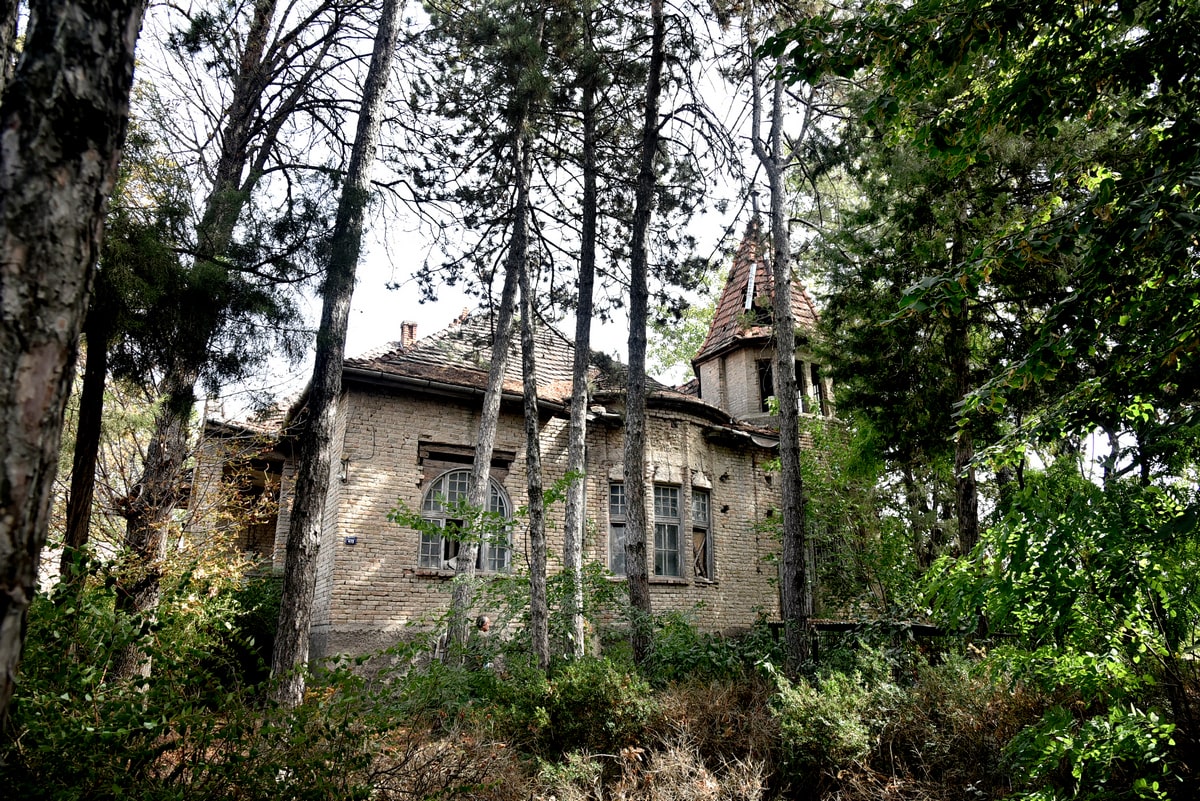Castles of Serbia
Ingus Castle
Hajdukovo
Ingus Castle in Hajdukovo between Subotica and Horgoš, is located at the very brim of the village, next to the railway. The castle is a registered cultural asset, and it was built by the Jewish viticultural family Ingus, more precisely Lipot and Justina after the Great War between 1918 and 1920. It was built in the sezession architectural style with elements of early modernism, which is typical for the transition from the time of sezession that ruled until 1918, and modernism that was looming on the horizon and will reach full momentum between the two world wars. It was built of brick and stone, and the facades used to be smooth plastered. Today, they have fallen off and only the ochre-orange brick wall can be seen, that is. of adobe, unbaked bricks made of mud and dried in the sun. This material is traditional for Vojvodina, but it is not long-lasting if it is not maintained.
Each facade is specially designed, since the castle is designed as a free-standing building. It has a protruding observation tower attached to the building, which is its “trademark”. However, an interesting design is that the tower faces the deep part of the park. It is difficult to scope it because of the lush vegetation of the park, which in the meantime, due to complete disorder and negligence, was left to overgrow and cover the building. The front façade contains a dominant porch with a staircase. The two central pillars are pseudo-Doric in style, while the outer two pillars are made of brick and square in shape. The stairwell rests on pillars indifferent style, which are connected with a semi-polished gable wall. One of the walls of the façade facing the park (rear façade) is semi-oval with a quasi-bay window.
The roof of the castle has begun to collapse and there is a threat for the entire building to collapse. Also, the porch began to collapse. The peeled walls inside the building tell us that it had light green interior walls. Many windows are broken and the parquet is falling apart.

There is still a beautiful park inside the yard, and the Inguses had their own synagogue in the yard, so they wouldn’t have to go to Subotica. Of it, which was also built of ochre-orange bricks, only the walls remained since the roof collapsed and is gone, and the interior was ransacked. The building needs urgent restoration.
Lipot and Justina ended up in the Auschwitz camp in the spring of 1944, from where they never came back. Aleksandar Šandor, son of Lipot and Justina, survived the war and was in Subotica until 1958. Today, in one ancillary building houses “Suncokret d.o.o.” that is, the company’s management.





